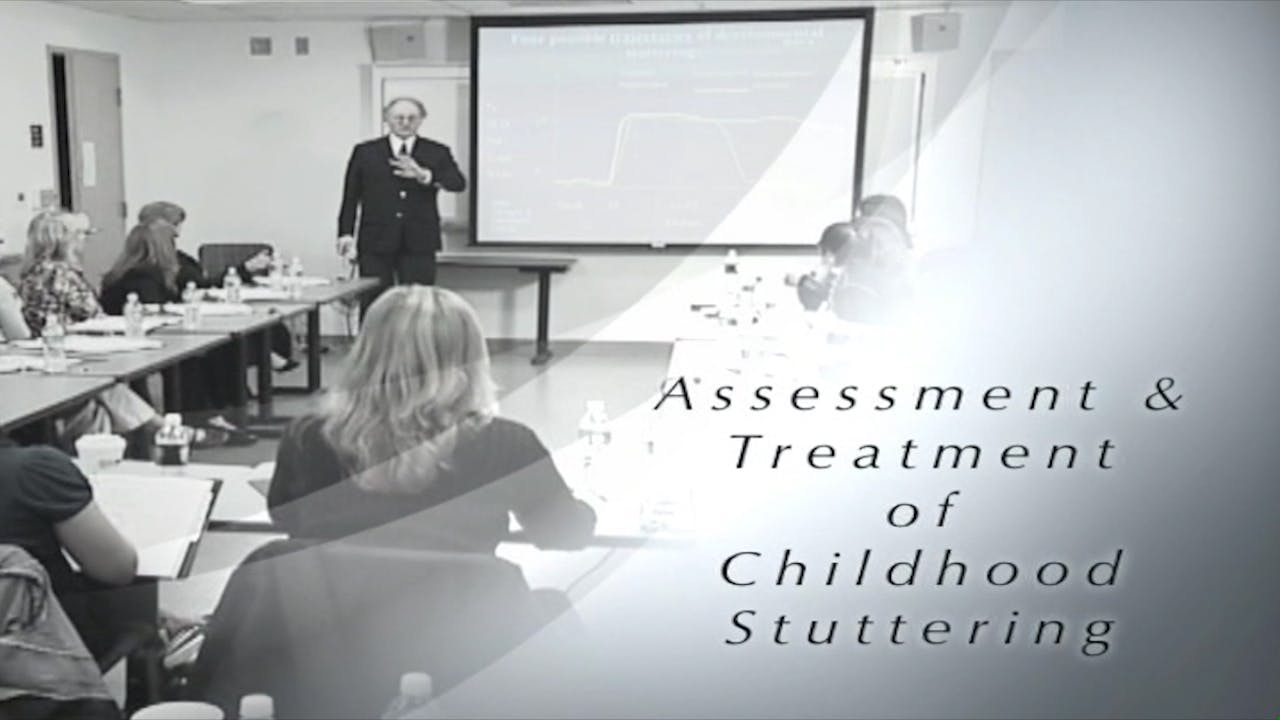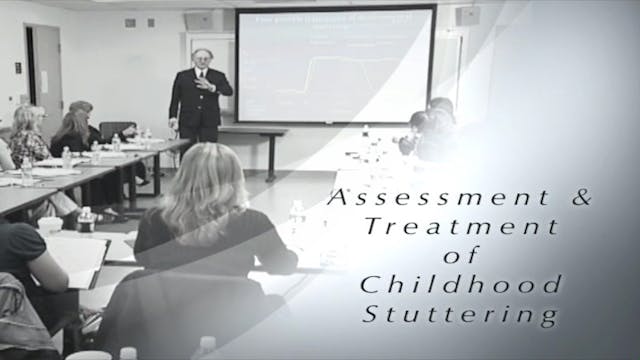Assessment and Treatment of Childhood Stuttering (#6200)
Edward G. Conture, Ph.D., of Vanderbilt University, discusses current data-based approaches to the assessment and treatment of preschool children who stutter.
Conture discusses current theoretical and clinical approaches to this population with supporting data that is based on more than 30 years of clinical and research experience.
Specific attention is paid to emotional and speech-language contributions to early stuttering, means for considering emotional and speech-language behaviors during assessment and ways to apply this information to treatment.
Several case studies are presented and discussed by the presenter and audience to arrive at an informed approach to the assessment and treatment of the young child who stutters and his/her family. (3 hours 36 minutes)
(start time) TOPIC
I. Overview: Assessment, Treatment and Theoretical Models of Developmental Stuttering
a. (00:00-) Introduction
b. (05:32-) Theoretical Models
c. (27:11-) Case Study #1
d. (32:30-) Notions & Urban Legends
e. (37:15-) Possible trajectories of Developmental Stuttering
f. (44:56-) Four Models: Theory, Assessment & Treatment
g. (52:49-) Case Study #2
II. Dual Diathesis Model
a. (1:03:43-) Three Problems for All Models of Stuttering
b. (1:05:52-) Possible Solution
c. (1:23:01-) Secondary Behaviors
e. (1:29:24-) Case Study #3
f. (1:36:17-) The DD-S Model Briefly Deconstructed
g. (1:36:31-) Speech-Language Diathesis
h. (1:40:17-) Emotional Diathesis
i. (1:47:45-) Stressors: Our Environment
j. (1:58:11-) Case Study #4
III. Some Evidence for the DD-S Model
a. (2:06:23-) Some Evidence
b. (2:11:24-) Deficiency Perspective
c. (2:17:29-) Picture Naming Priming Experiments
d. (2:23:38-) Three Clinical Cases
e. (2:25:38-) Lexical/Semantic Priming
f. (2:27:26-) Syntactic Prime Conditions
g. (2:29:55-) Disassociations
h. (2:35:32-) Sufficiency Perspective
i. (2:35:55-) Clinical Example of Preschool CWS
j. (2:36:53-) Emotional Processes
k. (2:43:58-) Tests of Emotional Reactivity and Regulation
l. (2:49:32-) Relation of E. Reactivity to E. Regulation
m.(2:56:37-) Case Study #5
IV. Speech-Language Interacts with Emotions
a. (3:06:00-) Some Treatment Outcome Evidence
b. (3:13:10-) Case Study #6
V. Basic Assumptions Regarding Assessment of Childhood Stuttering
a. (3:25:50-) Four Models: Theory, Assessment & Treatment
b. (3:29:58-) Types of Speech Disfluency
c. (3:31:04-) Disfluency Count Sheet
d. (3:33:23-) Exacerbation
e. (3:35:13-) Close
-
Assessment and Treatment of Childhood Stuttering (#6200)
Edward G. Conture, Ph.D., of Vanderbilt University discusses current data-based approaches to the assessment and treatment of preschool children who stutter.
Conture discusses current theroretical and clinical approaches to this population with supporting data that is based on more than 30 yea...

